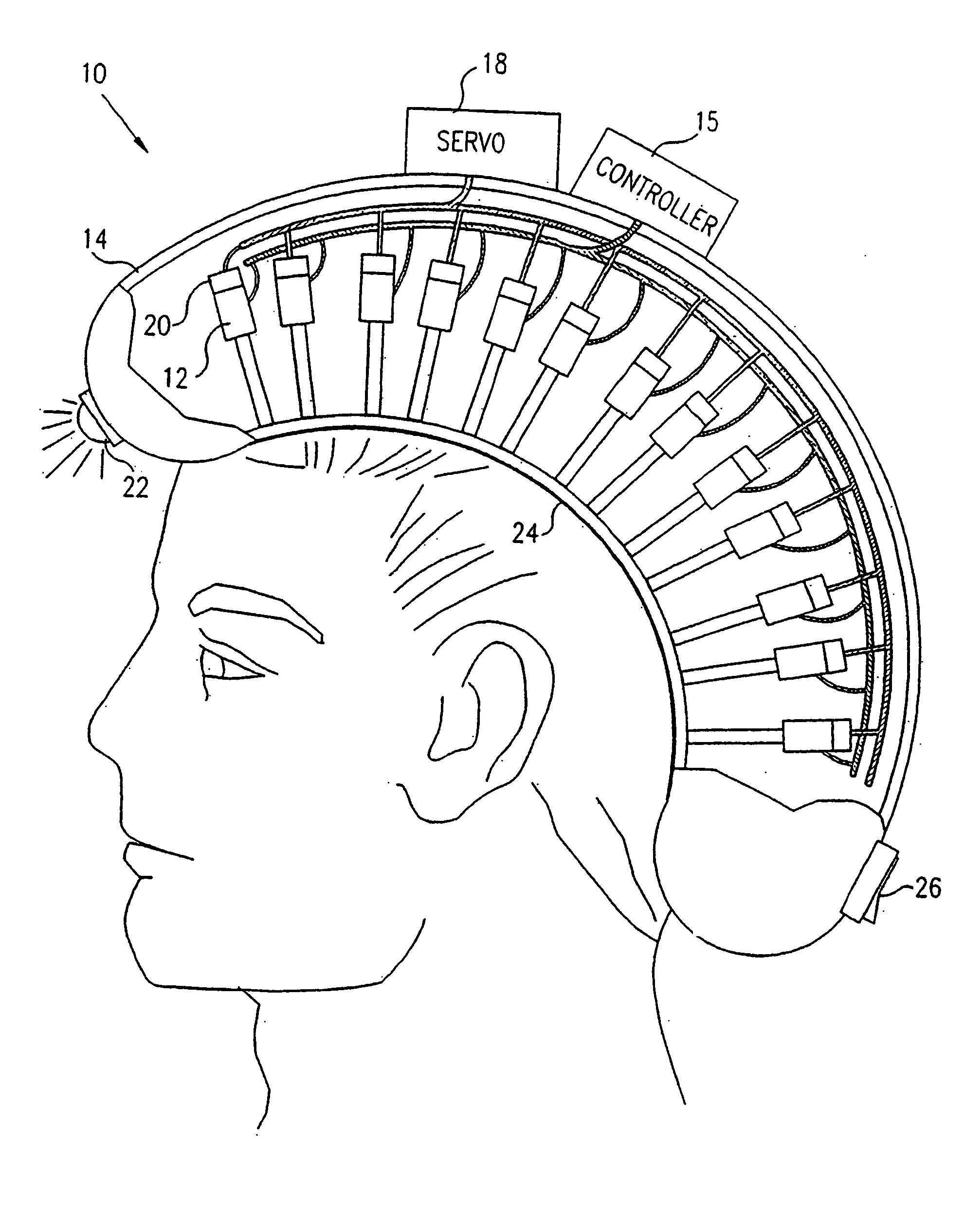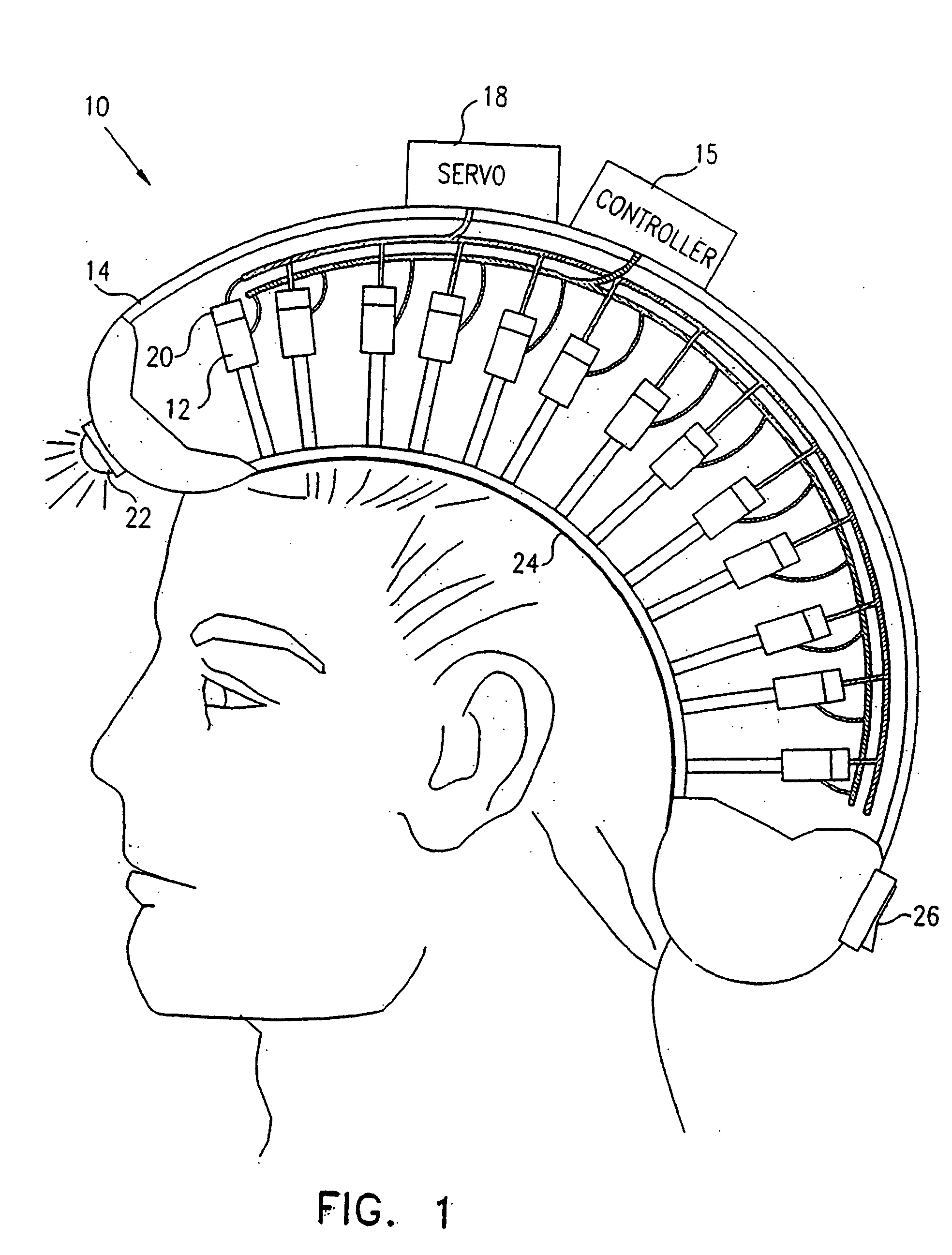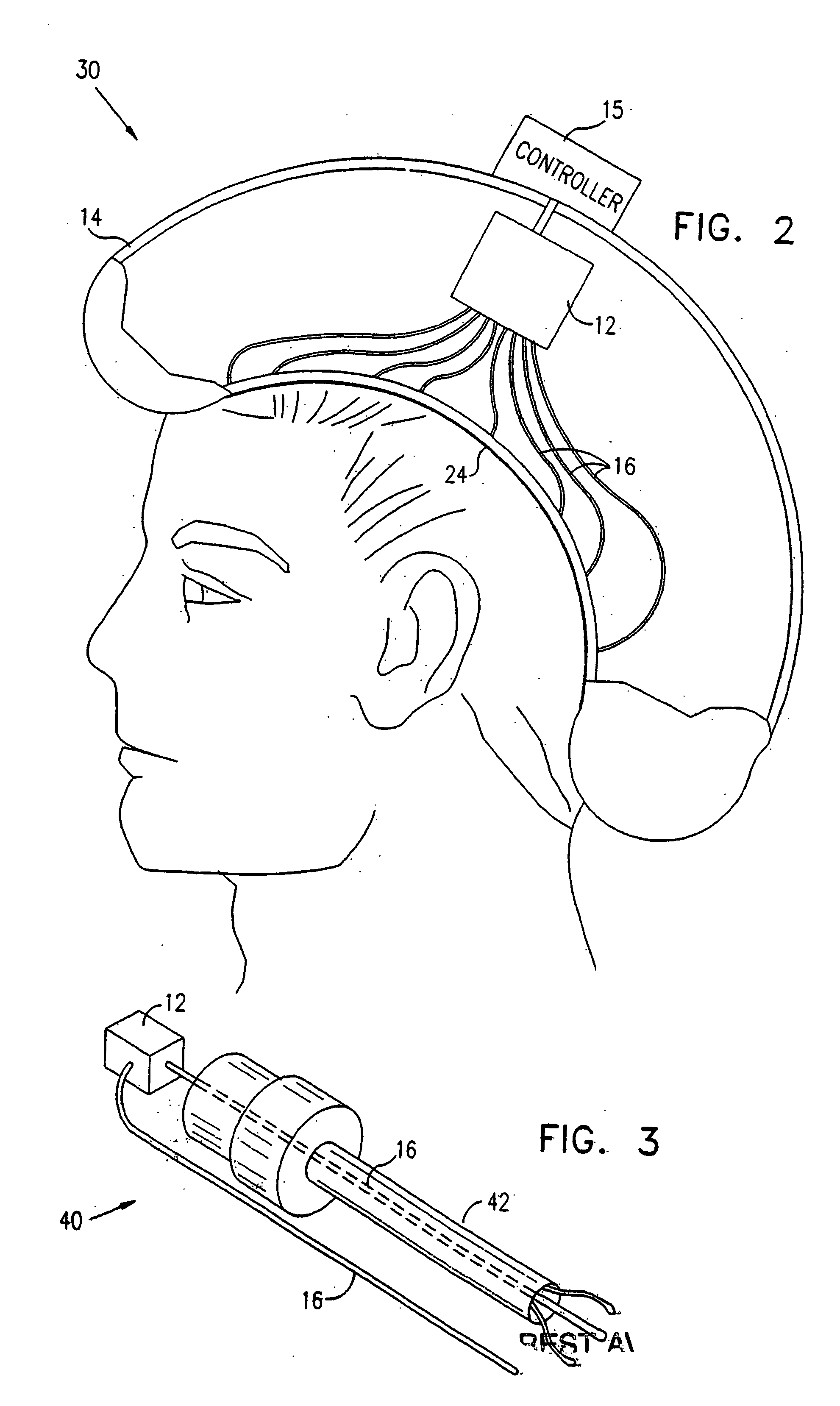Ischemia laser treatment
a technology of laser treatment and ischemia, applied in the field of ischemia laser treatment, can solve the problem that schwartz presents no experimental results, and achieve the effect of ensuring cell survival
- Summary
- Abstract
- Description
- Claims
- Application Information
AI Technical Summary
Benefits of technology
Problems solved by technology
Method used
Image
Examples
experiment i
[0037] The left common carotid artery of 12 mature Sprague-Dawley rats (250-300 gr. body weight anesthetized with Avertin) was exposed by a longitudinal incision to the frontal midline section of the neck. It was then occluded by ligation with a silk (4-0) thread.
[0038] The brains of six rats were irradiated by a diode laser. The irradiation was performed by a longitudinal incision in the scalp to expose the skull. The laser source (wavelength 807 millimicron, 400 mW maximal power output) was attached to the parietal bone in the skull (after exposing the skin) at two points: one between the eyes and one 1 cm posterior to the previous one. The duration of each irradiation was 2 minutes. The dispersion of the laser beam after its passage through the skull was measured by an infrared viewer in a preliminary experiment. The energy density that reached the brain tissue was 8 mW per square centimeter. The other six rats had lasers attached to the skull but the lasers were not connected t...
experiment ii
[0042] Occlusion of the left coronary artery was performed on fifteen white mice (25-35 gr.) in a similar method to that described for rats in Experiment I.
[0043] Seven of the mice were irradiated with the same laser as in Experiment I. The irradiation was performed through the skin that covers the skull. The power output of the laser was set so that the brain of the mice was exposed to an energy of 5 mW / sq. cm. for 2 minutes.
[0044] Since the laser beam beyond the skull was dispersed to a diameter of approximately 1.5 cm, only one irradiation in the center of the parietal bone was performed. The irradiation covered the entire dorsal part of the brain.
[0045] The other 8 mice served as control animals which went through the same process as the laser irradiated mice, but with the laser not turned on.
[0046] After induction of the stroke by ligation of the carotid artery, the mice were observed daily for neurological disorders / deficits and loss of weight. The results are presented in...
PUM
 Login to View More
Login to View More Abstract
Description
Claims
Application Information
 Login to View More
Login to View More - R&D
- Intellectual Property
- Life Sciences
- Materials
- Tech Scout
- Unparalleled Data Quality
- Higher Quality Content
- 60% Fewer Hallucinations
Browse by: Latest US Patents, China's latest patents, Technical Efficacy Thesaurus, Application Domain, Technology Topic, Popular Technical Reports.
© 2025 PatSnap. All rights reserved.Legal|Privacy policy|Modern Slavery Act Transparency Statement|Sitemap|About US| Contact US: help@patsnap.com



